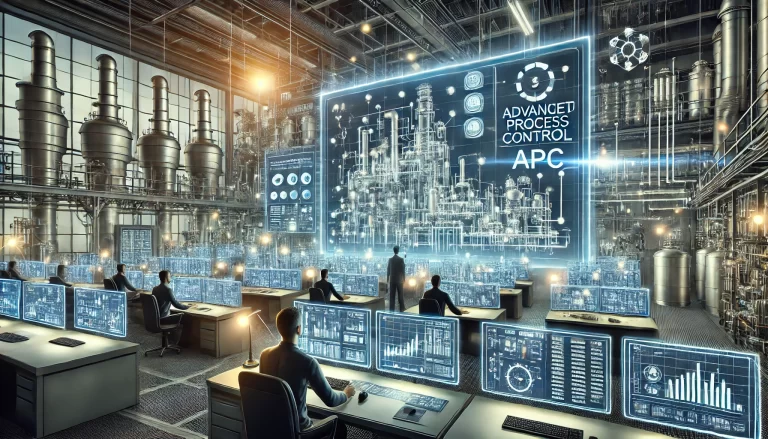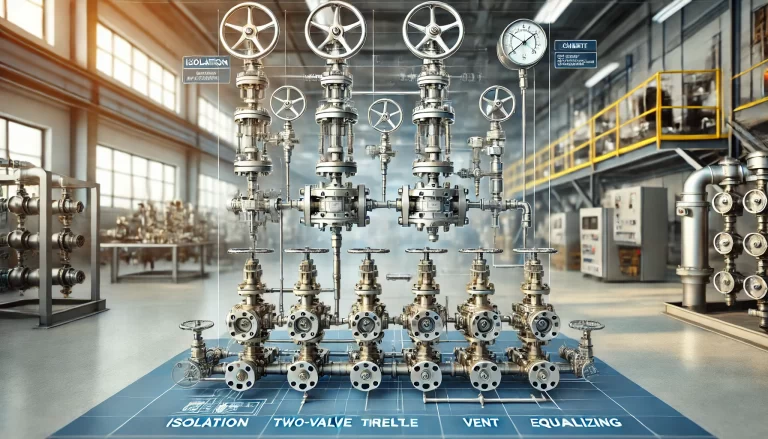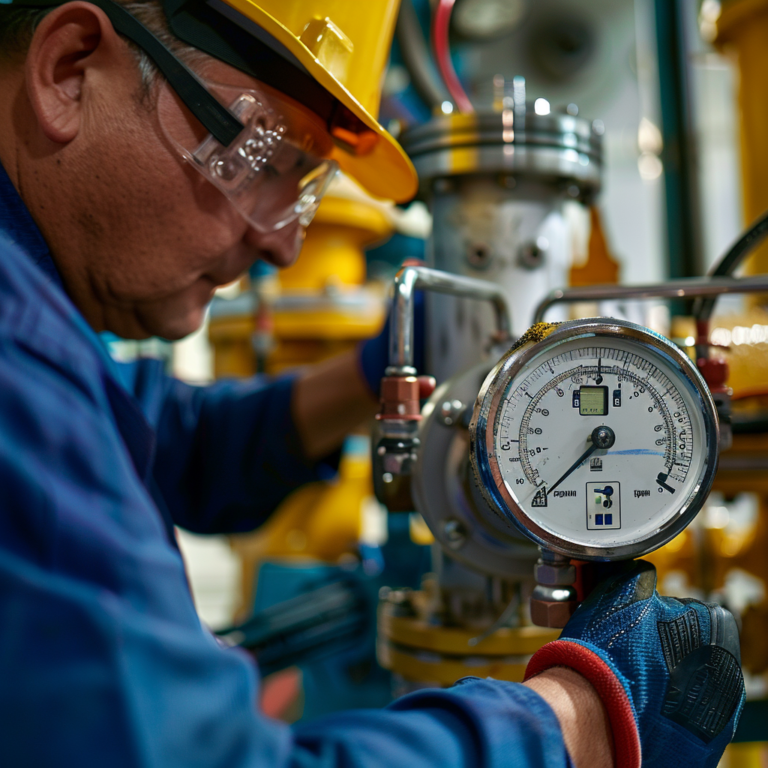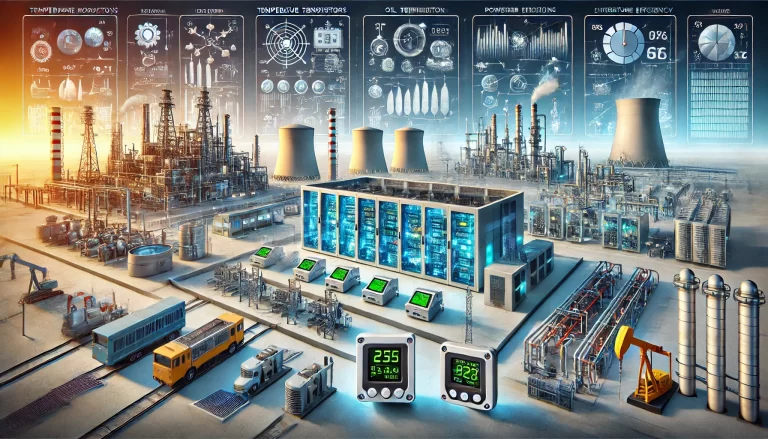In any industrial pipeline system, the proper installation of instruments and valves is essential to ensure accurate measurements, reliable operation, and safety. Pressure, temperature, and flow instruments are critical in monitoring and controlling the system, while valves are used to regulate or shut off the flow. The sequence in which these components are installed plays a significant role in their functionality and the overall performance of the pipeline.
This article discusses the typical sequence for installing pressure, temperature, and flow instruments along with valves in a pipeline system, emphasizing the reasoning behind the arrangements.

1. Valves – Initial Line Control
Valves are typically installed at strategic locations in the pipeline system to control the flow of fluids, regulate pressure, and shut off sections of the pipeline for maintenance or safety purposes.
Valve Types and Locations:
- Isolation Valves: These are installed at the beginning and end of the pipeline or at key junctions. Their main purpose is to isolate sections of the pipeline when needed.
- Control Valves: Used to regulate the flow of fluids based on certain set parameters. These are commonly installed in the pipeline system where flow rates need to be adjusted or controlled.
- Check Valves: Prevent backflow in the system, ensuring the fluid only flows in the intended direction.
Installation Considerations:
Valves should be positioned in a way that allows for easy access during operation and maintenance. They are generally placed upstream (before) or downstream (after) key instruments to ensure the instruments’ accurate reading and to allow proper system control. Importantly, the valve should be installed in a location where it will not disrupt the measurement accuracy of the instruments.

2. Flow Instruments – Accurate Flow Measurement
Flow instruments are used to measure the flow rate of fluids in the pipeline. Accurate flow measurements are vital for system monitoring, process optimization, and safety. However, the installation of flow meters must be done with careful attention to the conditions surrounding their placement.
Common Flow Instruments:
- Electromagnetic Flow Meters: Measure the flow of conductive fluids.
- Turbine Flow Meters: Suitable for low-viscosity fluids.
- Vortex Flow Meters: Common in high-temperature or high-pressure applications.
Installation Considerations:
- Distance from Valves: Flow meters should be installed at least several pipe diameters away from any valves, elbows, or other fittings that can create turbulence or disturbances in the flow, which would lead to inaccurate readings.
- Orientation: Flow meters should be installed according to the manufacturer’s specifications, ensuring that they are positioned in the correct direction of fluid flow.
- Straight Pipe Runs: Ideally, flow meters should be installed in straight sections of pipe where the flow is laminar and uninterrupted.
Importance of Location:
The placement of the flow instrument directly affects the accuracy of the readings. Installing it too close to valves or other flow disturbances can cause significant measurement errors. To avoid this, flow meters are often installed in sections of the pipe with a stable, uniform flow, ensuring precise data collection.

3. Pressure Instruments – Monitoring System Pressure
Pressure instruments are essential for ensuring the integrity of the pipeline and the safety of the system. They measure the pressure of the fluid within the pipeline, helping to detect any abnormal pressure fluctuations that could indicate blockages, leaks, or equipment failure.
Common Pressure Instruments:
- Pressure Transmitters: Provide continuous pressure readings and can transmit data to a control system.
- Pressure Gauges: Provide visual indicators of pressure levels within the system.
Installation Considerations:
- Location: Pressure instruments are typically installed at the pipeline’s key points, such as the entry and exit points, and at critical points where pressure drops or surges could indicate problems. These locations allow operators to monitor the system and make adjustments when necessary.
- Orientation: For accurate pressure measurement, the instrument should be installed on the side of the pipe to avoid interference from gas pockets (at the top of the pipe) or sediment build-up (at the bottom of the pipe).
- Protection: Pressure instruments should be protected from extreme fluctuations and surges in pressure, which could damage the sensors or cause inaccurate readings.

4. Temperature Instruments – Monitoring Fluid Temperature
Temperature measurement is crucial for maintaining optimal conditions in the pipeline. Temperature instruments monitor the heat of the fluid, which can affect both flow behavior and the performance of the equipment.
Common Temperature Instruments:
- Thermocouples: Measure the temperature by generating a voltage that correlates with temperature changes.
- RTDs (Resistance Temperature Detectors): Provide more stable and accurate temperature measurements in some environments.
Installation Considerations:
- Location: Temperature instruments are typically installed in locations where the fluid is well-mixed and homogeneous. It is best to avoid installing them near the pipeline entry or exit points, as the fluid might not have reached a steady temperature at these locations.
- Placement: Temperature sensors should be installed in straight sections of pipe and away from elbows or sharp turns, which may cause turbulent flow and affect the accuracy of the reading.
- Pipe Surface Contact: To ensure accurate readings, temperature sensors must be in good contact with the pipe surface, ensuring that the temperature of the pipe matches the temperature of the fluid inside.

Conclusion
The sequence and positioning of pressure, temperature, flow instruments, and valves in a pipeline system are crucial for achieving accurate measurements and ensuring efficient and safe system operation. By placing valves first for flow control, followed by flow meters for accurate measurement, pressure instruments for monitoring system integrity, and temperature sensors to ensure the system operates within the desired temperature range, the pipeline will function optimally.
To achieve the best performance, it is important to consider the fluid dynamics, installation environment, and manufacturer recommendations for each instrument. Proper placement ensures that the system will not only function reliably but also allow for precise monitoring and control of the process.
